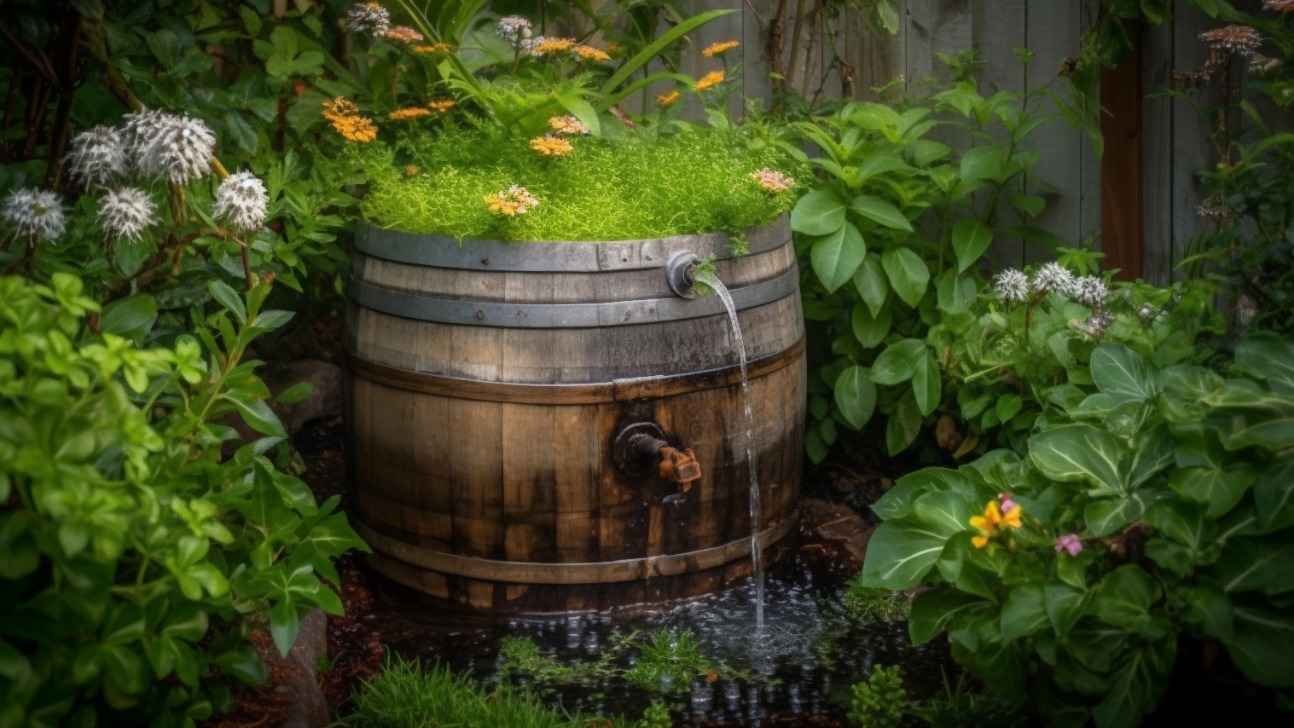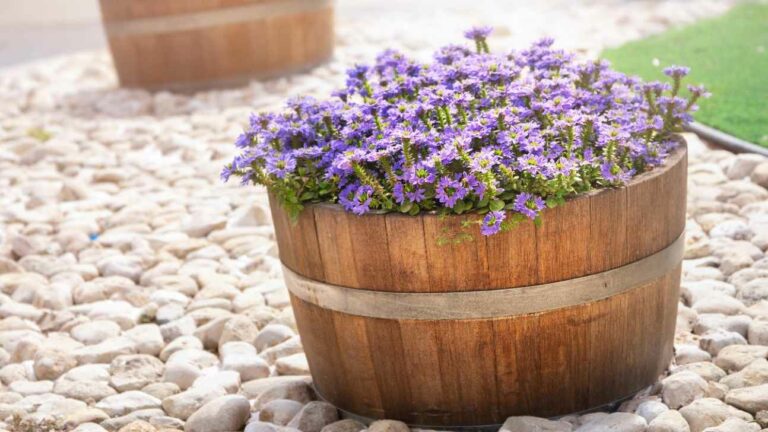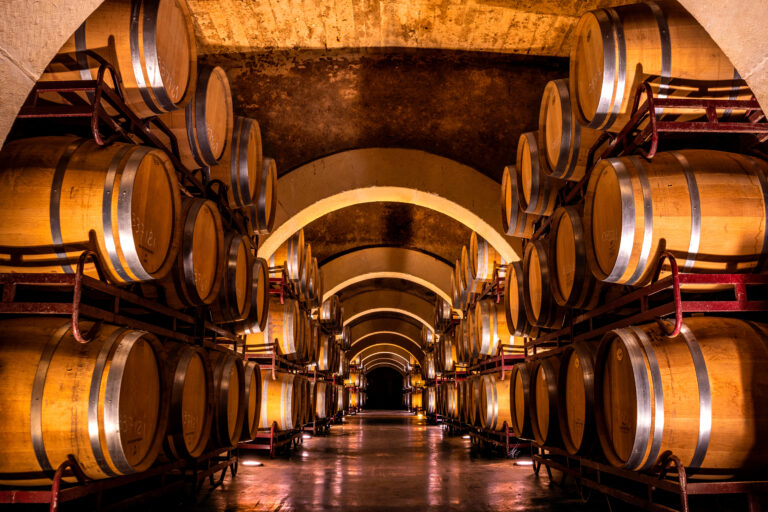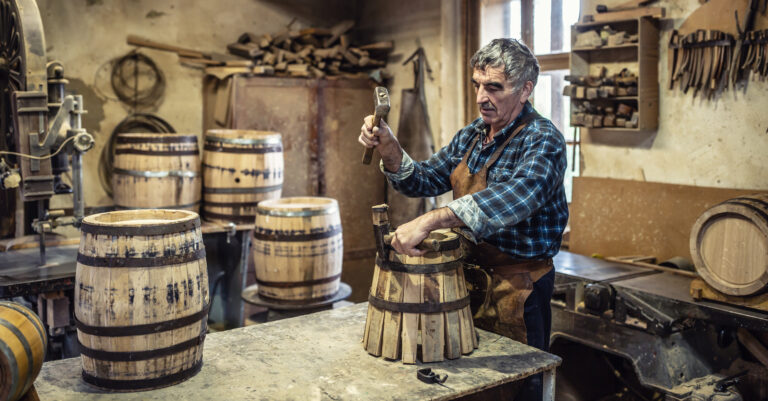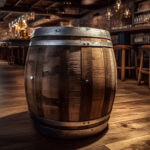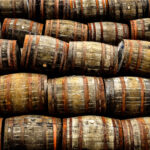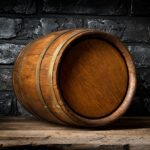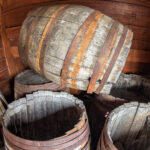So, you’re ready to start your own herb garden this year? That’s fantastic! Now, you’ll need some planters to show off your newfound gardening skills. Have you thought about using whiskey barrel planters? They have a unique charm and rustic look, perfect for showcasing a small herb garden. But before you grab your drill to make drainage holes, there are a few things you should know. Whiskey barrel planters need a bit of special attention to get your garden started on the right foot. Follow these tips to keep your herbs happy and avoid any hiccups with your whiskey barrel planter. Your herb garden will be the talk of the neighborhood this summer!
What Is a Whiskey Barrel Planter?
A whiskey barrel planter is an actual retired oak barrel that once held aging whiskey, now repurposed for growing plants. The barrel’s curved shape creates a rounded planter that fits perfectly on patios and in gardens.
Why Drill Drainage Holes?
Before you start drilling, think about the type of plants you want to grow. Some plants need more drainage than others. Perennials, succulents, and some annuals might only need a few holes, while plants that love moisture will need more to prevent their roots from rotting.
Also, check the condition of the barrel. If the wood is in good shape, start with just a few holes, maybe three to five, around the sides. You can always add more later, but you can’t undo it if you drill too many! If the barrel has some damage or rot, you’ll need to add more holes.
- Around the sides: Drill 3 to 5 holes spaced evenly apart, 1 to 2 inches up from the bottom. Each hole should be 1 to 3 inches wide.
- For the bottom: Flip the barrel over and drill 6 to 12 holes in a circular pattern in the center. These help with drainage and let the roots breathe.
- Check your work: Fill the barrel with water to make sure it drains well before you add soil and plants. The water should seep out at a moderate pace.
With the right number and placement of holes, a whiskey barrel planter can be a beautiful and long-lasting garden container for years to come. The key is to start slowly and check as you go to avoid over-drilling—you can always make more holes, but you can’t go back! By considering your plants’ needs and the barrel’s condition before drilling, you’ll end up with a planter that’s both practical and picturesque.
The Appeal of Whiskey Barrels for Gardening
Whiskey barrels make charming planters, but before you drill holes in the bottom, consider some key factors.
Aesthetics
Whiskey barrels have a rustic charm that’s hard to beat. Their weathered wood and metal hoops bring to mind rolling hills and distilleries. For a coordinated look, use barrels of the same size and type, like bourbon or wine barrels. Groups of two or three barrels work well for herb gardens or small patios.
Drainage
While barrels look great, they were originally made to store liquids, not plants. Drilling drainage holes in the bottom is a must, or your plants will drown. Aim for at least 10 to 15 holes about an inch wide for a standard barrel. You’ll also want to drill holes in the sides, especially if the barrel will be in a spot that gets a lot of rain.
Wood Preparation
Before adding plants, seal the inside of the barrel with a wood sealer or waterproofing product. This protects the wood and prevents rot. You’ll need to reapply the sealer every year or two. Some gardeners also line their barrels with landscape fabric to prevent soil from washing out the holes.
Plant Selection
Choose plants that will thrive in a barrel environment. Herbs, succulents, dwarf shrubs, and leafy greens are good options. Their root systems are compact enough for barrels and they don’t require deep soil. Whatever you plant, use a well-draining potting mix and fertilize regularly during the growing season.
With the right preparation and plant choice, whiskey barrels can make a gorgeous addition to any garden. So go ahead, drill away and get planting! Your garden will be glad you did.
Do You Need Drainage Holes in a Whiskey Barrel Planter?
Do whiskey barrel planters need drainage holes? This is an important question to consider before using an actual whiskey barrel as a planter.
Pros of Drilling Holes in Your Barrel
Having holes in the bottom of your whiskey barrel planter allows for drainage and aeration of the soil. This helps ensure your plants won’t drown or develop root rot from sitting in stagnant, soggy soil.
- Holes allow excess water to seep out after rain or watering. Without them, water has nowhere to go and will pool at the bottom of the barrel.
- Improved aeration means more oxygen reaches the roots. Plant roots need oxygen to thrive, and holes facilitate air flow in and out of the soil.
- Holes prevent hydraulic pressure from building up. As soil gets saturated, water pressure increases. Holes release this pressure and allow the soil to hold the maximum amount of moisture it can retain.
- Better drainage and aeration create an ideal environment for plant growth. Healthy, well-draining soil means happier, healthier plants.
- Holes won’t detract from the rustic, decorative look of a whiskey barrel. You can disguise holes by placing a layer of rocks, gravel, or decorative stones over them inside the barrel.
Most plants will not thrive without proper drainage and aeration. Whiskey barrels make charming planters, but without holes for excess water to escape, the soil conditions are unsuitable for the growth of many plants. Drilling holes in the bottom of the barrel solves this problem and allows you to use it as a fully functioning planter.
Providing a means for drainage and airflow is one of the most important things you can do to create an ideal growing environment for plants in a whiskey barrel planter. Drilling holes in the bottom of the barrel helps ensure your plants will stay happy and healthy for years to come.
Cons of Drilling Holes in Your Barrel
Drilling holes in your whiskey barrel planter may seem like an easy solution for drainage, but there are some downsides to consider before you drill.
Risk of cracking
Whiskey barrels are made of oak, which can crack under stress or impact. Drilling holes in the barrel risks cracking the wood, especially if you’re not experienced with drilling into oak. Cracks compromise the structure and appearance of the barrel, and can be difficult to repair.
Difficult to seal
If you ever want to move your barrel planter indoors or use it to contain liquid again, holes will be hard to properly seal. Oak swells when exposed to moisture, so plugs or seals may not create an airtight barrier. You’ll have a difficult time re-purposing the barrel for anything other than a planter.
Pests and rot
Holes in your barrel provide easy access for pests and pathogens. Insects can enter, and excess moisture may lead to rot. The inside of the barrel is untreated, so holes expose the raw wood. Sealing holes from the inside of the barrel is challenging and may not fully protect from pests or rot.
Uneven drainage
Multiple holes seem like a solution for ensuring good drainage, but can actually lead to uneven drainage and moisture levels in the barrel. Some areas may become over-saturated while others remain dry, creating an unsuitable environment for most plants. It’s difficult to drill holes evenly and space them properly for balanced drainage.
Aesthetics
Holes, cracks and plugs disrupt the rustic, natural aesthetic of a whiskey barrel. An intact barrel has a simple yet classic look, while holes and repairs make it appear damaged or pieced together. If aesthetics are important, drilling holes in the barrel may significantly impact its visual appeal.
Options to Consider
For small plants or those that require drier conditions, a barrel without holes may work fine if you are careful not to overwater. Only water when the top few inches of soil are dry.
If drilling holes, do so before adding soil and plants. Start with a few small holes, maybe 1/2 inch in size, and you can always add more. It’s easier to make holes bigger, but you can’t undo drilling a hole!
Consider a liner as mentioned to help contain the soil. Burlap is a natural choice that still maintains the rustic, whiskey barrel feel.
Group plants with similar light and water needs together in one barrel. This makes it easier to care for them.
In the end, it comes down to the specific plants you want to grow and how much maintenance you are willing to provide. Whiskey barrel planters can be a fun, decorative way to showcase plants, with or without drainage holes. But when in doubt, it’s always better for the plants to err on the side of adding holes. Their health and your enjoyment of them for years to come will thank you!
How to Drill Drainage Holes in a Whiskey Barrel
So you’ve got an old whiskey barrel you want to turn into a planter, but it doesn’t have any drainage holes. Drilling holes in the bottom is essential for allowing excess water to escape, otherwise your plants’ roots will rot. Here are the steps to drill drainage holes in a whiskey barrel:
Gather your supplies
You’ll need a drill, a spade bit (also called a paddle bit) that’s 1 to 2 inches in diameter, eye protection, work gloves, and a vacuum or brush to clean up wood shavings.
Flip the barrel upside down
With the help of another person, carefully flip your whiskey barrel upside down. This will allow you to drill into the bottom of the barrel without wood shavings falling onto your drill bit.
Mark the hole locations
Use a permanent marker to mark 4 to 8 evenly spaced holes around the bottom of the barrel. The holes should be at least 2 to 3 inches from the edge of the barrel.
Start drilling
Put on your eye protection and work gloves. Place the spade bit in your drill and position it over one of the hole marks. Start drilling slowly, applying firm and steady pressure. Continue drilling until you break through the bottom of the barrel.
Vacuum and flip
Use the vacuum or brush to clean wood shavings from the inside of the barrel. Carefully flip the barrel right-side up.
Add drainage material (optional)
For improved drainage, you can add a layer of gravel, clay balls, or perlite in the bottom of the barrel before adding potting soil. This will create air space for excess water to collect before seeping out the drainage holes.
Fill ‘er up!
Add potting soil and your plants to the barrel. Water thoroughly and place the barrel in its permanent spot. Check the drainage holes regularly to make sure they remain clear.
Drilling holes in a whiskey barrel planter may seem difficult, but by following these simple steps you’ll have a barrel ready for planting in no time. Let us know if you have any other questions!
Choosing the Right Soil Mix for Barrel Gardens
When choosing a soil mix for your whiskey barrel planter, opt for a loose, well-draining potting mix. Regular garden soil is too dense and can become waterlogged in a container.
A lightweight potting mix
Look for a mix labeled for container gardening or houseplants. These are formulated to provide the right amount of drainage and aeration for potted plants. They contain materials like perlite, vermiculite, coir or peat moss to create air space. This prevents soggy soil that can lead to root rot.
Add compost
For extra nutrition, mix in some compost, composted manure or worm castings. About 1 part compost to 2 parts potting mix is a good ratio. The compost will provide nutrients to keep your plants fed for the growing season.
Consider your plants
If you’re planting flowers, a general purpose mix will work great. For vegetables, use a mix formulated for edibles or make your own by mixing equal parts potting mix, compost and perlite or vermiculite. For shrubs or small trees, use a mix for woody plants or azaleas which is slightly acidic.
pH balanced
Check that the potting mix you choose has a pH between 6 and 7 which suits most plants. More acidic mixes are best for blueberries, azaleas and gardenias. Alkaline mixes with a higher pH are better for herbs like rosemary or lavender.
Moist but not soggy
Before planting, moisten the potting mix. It should be damp but still crumble in your hands. Fill your barrel about 2/3 full, then add plants and more mix. Press firmly around the base of each plant to prevent air pockets.
With the right soil mix and proper watering, your whiskey barrel planter will provide the perfect environment for your plants to thrive. Be sure to fertilize during the growing season and check moisture levels regularly. Your efforts will be rewarded when your barrel overflows with beautiful blooms and bountiful harvests!
Ideal Plants for Whiskey Barrel Planters
Herbs
Whiskey barrels are ideal for growing fresh herbs right outside your kitchen door. Their depth provides plenty of room for herbs to spread out their roots. Some great options include:
- Mint – Refreshing mint is a perfect match for bourbon barrels. Plant several varieties like spearmint, peppermint or chocolate mint.
- Rosemary – The aromatic rosemary plant thrives in the well-drained soil of a whiskey barrel.
- Thyme – Delicate thyme plants do nicely in barrels and provide flavorful foliage for cooking.
- Chives – The hollow green stems of chives add flavor and color when snipped fresh from the plant.
- Oregano – Pungent oregano is a natural pairing for tomato sauce and pairs well in a whiskey barrel.
Flowers
Whiskey barrels also make stunning planters for flowering plants to brighten up your outdoor space. Some top choices include:
- Petunias – Cascading petunias will tumble over the sides of a barrel in vibrant pinks, purples and yellows.
- Marigolds – Cheerful marigolds come in shades of gold, orange and red that pop against the charred wood of a bourbon barrel.
- Geraniums – Colorful geraniums thrive in whiskey barrels, providing bright red blooms all season long.
- Begonias – Beautiful begonias produce delicate pink or red flowers and decorative leaves that trail over the sides of planters.
- Impatiens – Shade-loving impatiens offer colorful blooms in a variety of pastel shades perfect for shady barrel locations.
With the ideal blend of drainage and moisture retention, whiskey barrels make a wonderful home for plants. Choose herbs, flowers or a combination of both to create a lush display that will make your bourbon barrel planter the highlight of your outdoor space. By selecting plants that match your climate and providing good care, your barrel garden will thrive and bring you joy for years to come.
Whiskey Barrel Garden Care Tips: Watering, Fertilizing and More
To keep your whiskey barrel planter garden thriving, follow these care tips:
Watering
Water your barrels regularly, especially for the first few weeks after planting. Aim for about an inch of water per week. Stick your finger in the soil to check moisture levels before watering. The soil should dry out slightly between waterings. Overwatering can lead to root rot.
Fertilizing
Fertilize your barrel garden every few weeks during the growing season. Use a balanced, all-purpose fertilizer with equal parts nitrogen, phosphorus, and potassium, such as 10-10-10. Follow the directions on the product packaging and be careful not to overfertilize. Too much fertilizer can burn plants.
Repotting
Repot plants in your whiskey barrel planter if they become pot bound or top heavy. Carefully remove the entire plant, root ball and all, from the barrel. Place fresh potting mix in the bottom of the barrel and replant the plant at the same level it was originally growing. Water thoroughly after repotting.
Pest Control
Inspect your barrel garden regularly for common pests like aphids, spider mites, and mealybugs. Treat infestations early with insecticidal soap or neem oil, following directions carefully. For severe infestations, you may need to resort to chemical pesticides. Always follow the directions on the product packaging.
Pruning
Prune plants in your barrel planter to control their size and shape. Remove dead or damaged foliage and stems. Pinch back stems and shape plants by cutting them back by about one-third. Pruning also encourages new healthy growth.
Mulching
Add a layer of mulch over the top of the soil in your whiskey barrel planter. Organic mulches like compost, chopped leaves, straw, and pine needles help retain moisture in the soil, prevent weed growth, and slowly release nutrients as they break down. Replenish the mulch as needed.
Drainage Holes
Whiskey barrels typically do not have drainage holes, so you’ll need to drill several in the bottom of the barrel before using it as a planter. Drilling holes allows excess water to drain and helps prevent root rot. Place the barrel on feet or blocks to allow for airflow under the barrel.
Final Thoughts
So there you have it, the pros and cons of drilling holes in your whiskey barrel planters. While drainage and aeration are important for healthy plant growth, you have to weigh that against the character a sealed barrel provides. As with many things in life, it comes down to your personal preferences and priorities. If having the most optimal conditions for your plants is most important, drill away without regret. But if maintaining the rustic aesthetic of an unaltered barrel is key, you can still have success without putting holes in it. Either way, with the right soil, plants, and care, you can have a thriving whiskey barrel garden to enjoy for years to come. The choice is yours – to drill or not to drill. Whatever you decide, happy gardening!
I’ve tried to make the language more conversational and engaging, while still keeping the informative tone and structure of the original article. I hope this is more in line with what you were looking for!
